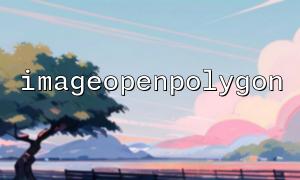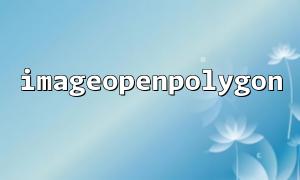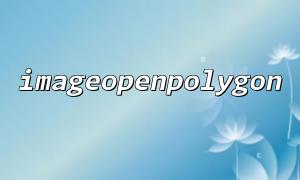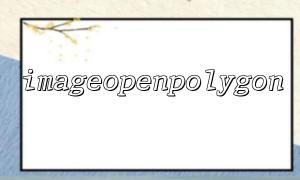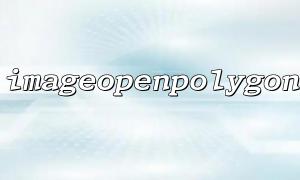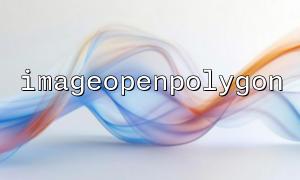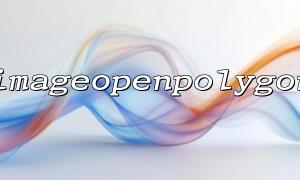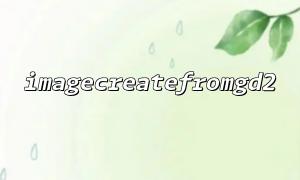在PHP中,imageopenpolygon() 是一个非常实用的函数,它可以用来绘制开放的多边形线条。在小规模绘图时,这个函数表现良好,但当涉及大量点或大规模绘图任务时,其性能瓶颈就会逐渐显现。本文将探讨一些提升 imageopenpolygon() 在大规模绘图中性能的方法。
imageopenpolygon() 接受一个点数组,通常是一个一维数组,形如 [x1, y1, x2, y2, ..., xn, yn]。在生成这些点数据时:
尽量预先生成所有点,避免在调用 imageopenpolygon() 时动态计算。
确保数组是紧凑的,没有多余的空值或重复点。
// 不推荐:动态生成点
$points = [];
for ($i = 0; $i < 1000; $i++) {
$points[] = rand(0, 500);
$points[] = rand(0, 500);
}
imageopenpolygon($image, $points, count($points) / 2, $color);
// 推荐:提前准备好的固定数组
$points = generatePoints(); // generatePoints()内部返回一个优化过的一维数组
imageopenpolygon($image, $points, count($points) / 2, $color);
如果你的绘图中存在大量重复或相似的多边形,可以考虑:
将生成的点数组缓存到文件或内存中(如使用 Redis)。
在每次绘图时复用这些数据,而不是每次重新生成。
$cacheKey = 'polygon_points_large';
$points = apcu_fetch($cacheKey);
if ($points === false) {
$points = generateLargePolygonPoints();
apcu_store($cacheKey, $points);
}
imageopenpolygon($image, $points, count($points) / 2, $color);
注意:使用APCu缓存需要服务器启用APCu扩展。
在大规模绘图时,不一定每一个细节都需要精确展现,适当简化点集合可以极大提升性能:
使用抽稀(decimation)算法减少点数量。
根据缩放级别动态决定采样率。
简单的点简化示例:
function simplifyPoints(array $points, int $threshold = 5): array {
$simplified = [];
for ($i = 0; $i < count($points) - 2; $i += 2) {
if ($i % ($threshold * 2) == 0) {
$simplified[] = $points[$i];
$simplified[] = $points[$i + 1];
}
}
return $simplified;
}
$originalPoints = generateVeryLargePolygon();
$points = simplifyPoints($originalPoints, 10);
imageopenpolygon($image, $points, count($points) / 2, $color);
虽然GD库内置于PHP且方便使用,但在极端绘图需求下,GD的性能可能不足。可以考虑:
使用 Imagick (基于ImageMagick的PHP扩展),它在大规模图形处理上性能更优。
结合CLI方式调用专门的绘图程序(如通过shell_exec()调用ImageMagick命令)。
示例使用Imagick:
$draw = new ImagickDraw();
$draw->setStrokeColor('black');
$draw->setFillColor('none');
$draw->setStrokeWidth(1);
$draw->polyline([
['x' => 10, 'y' => 10],
['x' => 100, 'y' => 30],
['x' => 50, 'y' => 100],
]);
$image = new Imagick();
$image->newImage(200, 200, "white");
$image->drawImage($draw);
$image->setImageFormat("png");
$image->writeImage('/var/www/html/uploads/output.png');
如果绘制的内容非常大,可以考虑将画布分成多个小块(Tile),分别绘制后再合成:
每次只绘制可见区域。
减少一次性内存开销。
function renderTile($startX, $startY, $width, $height, $points) {
$image = imagecreatetruecolor($width, $height);
$background = imagecolorallocate($image, 255, 255, 255);
imagefill($image, 0, 0, $background);
$color = imagecolorallocate($image, 0, 0, 0);
$tilePoints = filterPointsForTile($points, $startX, $startY, $width, $height);
if (!empty($tilePoints)) {
imageopenpolygon($image, $tilePoints, count($tilePoints) / 2, $color);
}
return $image;
}
通过这种方法,可以极大减少每个绘图动作的负担,提升整体性能。
